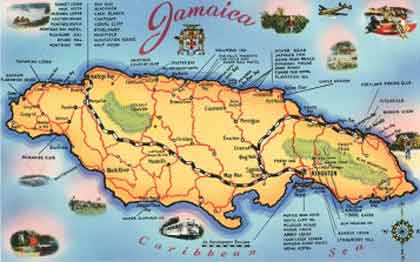Starting from 1672, the slave trade from Africa to Jamaica grew rapidly. The increase of production and work force allowed products like sugar, indigo, and cacao to be frequently exported out of the island. When we look at the history of Jamaica, there is one outlying factor that made Jamaica appealing to other countries. Jamaica had a rapidly growing trade of sugar. Jamaica's blossoming trade of sugar attracted many neighboring countries' attention, as it was the largest trade dominating the market for more than 150 years.(E)
However, this trade led to internal problems within the island itself. An increase of slaves and labor led to civil instability, such as revolts caused by unstable food supplies.(C) While trying to face high production costs, coffee became another crop added to the mix because plantation owners wanted more production. This increase in slave labor and production led to two of the most vicious periods in the 18th century: the Maroon Wars. Following the first war in 1725-39, the island's governor gave freedom to members of Maroon warrior Cudjoe's group, and handed over control of inside lands.(A)This shift led to the second Maroon War in 1795-97 when British forces won by burning towns, and destroying crops along the way.(A) After fighting finally stopped, about 600 Maroons were deported from Jamaica, never to return. Although the wars were finished though, revolts then broke out against the missionaries because it was believed that they were causing revolts among commoners. Churches were burned to the ground and missionaries feared for their lives.(A) These two examples of internal problems show the vulnerable and unstable state Jamaica was in after early Conquest, while also proving that Britain had to fight to keep Jamaica under their control.

No comments:
Post a Comment